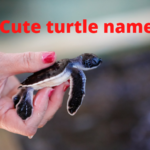There are fourteen extant families of the order Testudines, an order of reptile that includes turtles and tortoises. The Testudines are some of the most ancient reptiles alive, with only the Tuataras considered more primitive. There are approximately 300 extant species and 97 genera of testudines, split into two suborders: the Cryptodirans and the Pleurodirans.
Testudines theories
There are a number of different theories about the origins of the Testudines. Some scientists believe they originated in the Triassic period, while others believe they originated even earlier, in the Permian period. The most ancient known member of the order Testudines is Proganochelys, which lived during the Late Triassic period. The first turtles appeared during the Late Triassic, and the majority of turtle families originated in the Cretaceous period.
Where are turtles found?
Turtles are found on every continent except Antarctica. They can range in size from a few centimeters to over two meters in length. The largest turtle is the leatherback sea turtle, which can weigh up to 900 kg. The smallest turtle is the speckled padloper tortoise, which only weighs about 140 grams.
Turtles are ectothermic
Turtles are ectothermic animals, meaning they rely on external sources of heat to regulate their body temperature. They are also covered in a hard shell, which protects them from predators and other environmental threats. The shell is composed of two parts: the carapace, which covers the turtle’s back, and the plastron, which covers the turtle’s belly.
Turtles are mostly herbivorous
Turtles are generally herbivorous animals, although some species are omnivorous. They have a number of different adaptations that help them to find and eat food. For example, many turtles have long necks that they can use to reach food that is out of their reach.
If you’re interested in learning more about these fascinating animals, be sure to check out the 14 extant families of the order Testudines. You might just be surprised by how much you didn’t know about these ancient reptiles!
Cryptodirans and Pleurodirans
The order Testudines is split into two suborders: the Cryptodirans and the Pleurodirans. The Cryptodirans are the more primitive group, and they include the tortoises and turtles. The Pleurodirans are a more recent group, and they include the sea turtles and soft-shelled turtles .
Tortoises
Tortoises are terrestrial animals, and they have heavy, domed shells. Turtles are aquatic or semi-aquatic animals, and they have lighter shells. Both tortoises and turtles can retract their head and limbs into their shell for protection.
397 species of Cryptodirans and Pleurodirans
There are approximately 300 extant species and 97 genera of testudines, split into two suborders: the Cryptodirans and the Pleurodirans. The Testudines are some of the most ancient reptiles alive, with only the tuataras considered more primitive.
Summary
The Testudines are a group of ancient reptiles that include turtles and tortoises. Testudines are divided into the two groups Cryptodirans and the Pleurodirans. Together these two groups hold 397 species of turtles and tortoises.
They are found on every continent except Antarctica, and they range in size from a few centimeters to over two meters in length.
The largest turtle is the leatherback sea turtle, and the smallest turtle is the speckled padloper tortoise. Turtles are ectothermic animals, meaning they rely on external sources of heat to regulate their body temperature.
They are also covered in a hard shell, which protects them from predators and other environmental threats. Turtles are generally herbivorous animals, although some species are omnivorous.


